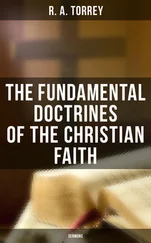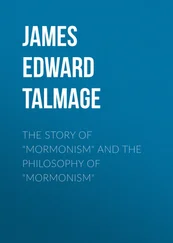7. Idolatrous Practices in General.—The soul of man, once abandoned to depravity, is strongly prone to depart from God and his institutions. "Hence," says Burder, "have arisen the altars and demons of heathen antiquity, their extravagant fictions, and abominable orgies. Hence we find among the Babylonians and Arabians, the adoration of the heavenly bodies, the earliest forms of idolatry; among the Canaanites and Syrians, the worship of Baal, Tammuz, Magog, and Astarte; among the Phœnicians, the immolation of children to Moloch; among the Egyptians, divine honors bestowed on animals, birds, insects, leeks, and onions; among the Persians, religious reverence offered to fire; and among the polished Greeks, the recognition in their system of faith of thirty thousand gods. Hence, moreover, we find at the present time, among most Pagan tribes, the deadliest superstitions, the most cruel and bloody rites, and the most shocking licentiousness and vice, practiced under the name of religion."—History of all Religions, p. 12.
8. Examples of Atrocious Idolatry.—The worship of Moloch is generally cited as an example of the cruelest and most abhorrent idolatry known to man. Moloch, called also Molech, Malcham, Milcom, Baal-melech, etc., was an Ammonite idol: it is mentioned in scripture in connection with its cruel rites (Lev. xviii, 21; xx, 2–5; see also I Kings xi, 5, 7, 33; II Kings xxiii, 10, 13; Amos v, 26; Zephaniah i, 5; Jeremiah xxxii, 35). Keil and Delitzsch describe the idol as being "represented by a brazen statue which was hollow, and capable of being heated, and formed with a bull's head, and with arms stretched out to receive the children to be sacrificed." While the worship of this idol did not invariably include human sacrifice, it is certain that such hideous rites were characteristic of this abominable shrine. The authors last quoted say: "From the time of Ahaz, children were slain at Jerusalem in the valley of Ben-Hinnom, and then sacrificed by being laid in the heated arms and burned." (II Kings xxiii, 10; xvi, 3; xvii, 17; xxi, 6; Jer. xxxii, 35; Ezek. xvi, 20, 21; xx, 31; compare Psalms cvi, 37, 38.) Many authorities state that the sacrifice of children to this hideous monster long ante-dated the time of Ahaz. "The offering of living victims was probably the climax of enormity in connection with this system, and it is said that Tophet, where it was to be witnessed, was so named from the beating of drums to drown the shrieks and groans of those who were burned to death. The same place was called the Valley of Hinnom, and the horrible associations connected with it led to both Tophet and Gehenna ('valley of Hinnom') being adopted as names and symbols of future torment." For foregoing facts, and others, see "The Pentateuch" by Keil and Delitzsch, and Cassell's Bible Dictionary .
Scarcely less horrible were the practices of voluntary suicide under the car of the idol Juggernaut, and the drowning of children in the sacred Ganges as found among the Hindoos. According to Burder ("History of all Religions"), the ponderous and hideous image Juggernaut, was, on festival days, usually placed on a movable tower resting on wheels; and, thus mounted, was drawn through the streets by enthusiastic worshipers. As the car moved along, some of the most zealous of the devotees threw themselves under the wheels and were crushed to death; and such acts were "hailed with the acclamations of the multitude as the most acceptable sacrifices." The same author thus describes the rite of child-sacrifice to the sacred river, as formerly practiced in India:—"People in some parts of India, particularly the inhabitants of Orissa, and of the eastern parts of Bengal, frequently offer their children to the goddess Gunga. The following reason is assigned for this practice: When a woman has been long married, and has no children, it is common for the man, or his wife, or both of them, to make a vow to the goddess Gunga, that if she will bestow the blessing of children upon them, they will devote the firstborn to her. If, after this vow, they have children, the eldest is nourished till a proper age, which may be three, four, or more years, according to circumstances when, on a particular day, appointed for bathing in any part of the river, they take the child with them and offer it to the goddess: the child is encouraged to go farther and farther into the water, till it is carried away by the stream, or is pushed off by its inhuman parents."—History of all Religions, pp. 745–746.
The practices of Druidism among the ancient Britons furnish another example of degradation in religion through the absence of authoritative guidance and the light of revelation. The Druids professed a veneration for the oak, and performed most of their distinctive ceremonies in sacred groves. Human sacrifices were offered as a feature of their system. Of their temples, some, e.g. Stonehenge on Salisbury Plain, Wiltshire, and others in Kent, still remain. These circular enclosures, which were open to the sky, were called doom-rings : near the center of each was an altar ( dolmen ) on which victims were sacrificed. The horrible ceremonies included on special occasions the burning alive of large numbers of human beings, enclosed in immense cages of wicker-work.
9. Immaterialists are Atheists.—"There are two classes of atheists in the world. One class denies the existence of God in the most positive language; the other denies his existence in duration or space. One says 'There is no God;' the other says 'God is not here or there , any more than he exists now and then .' The infidel says 'God does not exist anywhere.' The immaterialist says 'He exists nowhere .' The infidel says 'There is no such substance as God.' The immaterialist says 'There is such a substance as God, but it is without parts .' The atheist says 'There is no such substance as spirit .' The immaterialist says 'A spirit, though he lives and acts, occupies no room, and fills no space in the same way and in the same manner as matter, not even so much as does the minutest grain of sand.' The atheist does not seek to hide his infidelity; but the immaterialist, whose declared belief amounts to the same thing as the atheist's, endeavors to hide his infidelity under the shallow covering of a few words. … The immaterialist is a religious atheist; he only differs from the other class of atheists by clothing an indivisible unextended nothing with the powers of a God. One class believes in no God; the other believes that Nothing is god and worships it as such."—Orson Pratt, in pamphlet Absurdities of Immaterialism, p. 11.
10. Atheism, a Fatal Belief.—"During the Reign of Terror, the French were declared by the National Assembly to be a nation of atheists; but a brief experience convinced them that a nation of atheists could not long exist. Robespierre then 'proclaimed in the convention, that belief in the existence of God was necessary to those principles of virtue and morality upon which the republic was founded; and on the 7th of May, the national representatives, who had so lately prostrated themselves before the Goddess of Reason, voted by acclamation that the French people acknowledged the existence of the Supreme Being, and the immortality of the soul.'"—Students' France, xxvii, 6; quoted by Rev. Charles E. Little, in Historical Lights, pp. 280–281.
11. The Trinity.—"'Mormonism' affirms its unqualified belief in the Godhead as the Holy Trinity, comprising Father, Son, and Holy Ghost; each of the three a separate and individual personage; the Father and the Son each a personage of spirit and of immortalized body; the Holy Ghost a personage of spirit. The unity of the Godhead is accepted in the literal fulness of scriptural declaration—that the Three are one in purpose, plan, and method; alike in all their Godly attributes; one in their Divine omniscience and omnipotence; yet as separate and distinct in their personality as are any three inhabitants of earth. 'Mormonism' claims that scripture passages declaring the oneness of the Trinity admit of this interpretation; that such indeed is the natural interpretation, and that the conception is in accord with reason."—The Philosophy of "Mormonism," by The Author: Improvement Era, vol. iv, p. 463.
Читать дальше












